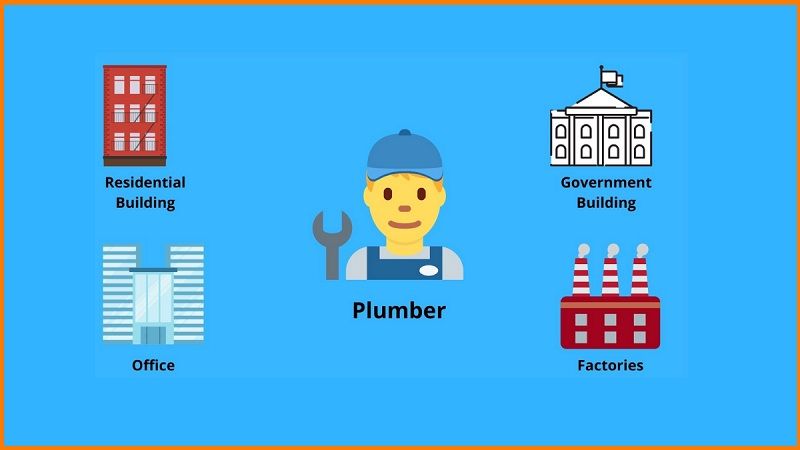The Home Depot was founded on 6th February 1978 by co-founders Bernard Marcus, Arthur Blank, Ron Brill, Pat Farrah, and Ken Langone. In the 46 years since its inception, the company has grown to operate big box-format stores across the United States of America including the District of Columbia, Guam, Puerto Rico, and the US Virgin Islands, 10 provinces of Canada, 32 states of Mexico and the City of Mexico. Home Depot also owns the MRO company Interline Brands, which boasts 70 distribution centers across the US. By the year 2023, Home Depot boasted 471,600 employees and a revenue of more than USD 157.40 billion.
The Home Depot Highlights
| Company Name | The Home Depot |
|---|---|
| Headquarters | Atlanta, Georgia, United States |
| Sector | Home Improvement Retailer, Consumer Discretionary |
| Founders | Bernard Marcus, Arthur Blank, Ron Brill, Pat Farrah, and Ken Langone |
| Founded | 1978 |
| Revenue | $152.70 Billion (2024) |
| Website | www.homedepot.com |
The Home Depot History
Expansion Through Further Acquisitions
Private Brands of The Home Depot
Reasons for Success
The Home Depot History
The Home Depot was built with the idea of home-improvement superstores that were larger than any of their competitors. The first two stores of The Home Depot opened on 22nd June 1979 in metro Atlanta, followed by stores opening in Hollywood and Fort Lauderdale in 1981. Three months later, by September of the same year, it got listed on NASDAQ and was able to raise USD 4.093 million.
By the year 1984, The Home Depot had grown and was operating in 19 cities, clocking sales of more than USD 256 million, and had joined the New York Stock Exchange as well. In the same year, it acquired Bowater Home Centre for a total of USD 40 million. However, this quick rate of expansion and growth landed the company into troubled waters financially as it struggled with its earnings, which dropped by 42%, and debt rose to USD 200 million, causing a reduction in its stock price as well.
The Home Depot management took swift action and reduced their store expansion to only 10 outlets in 1986 and offered 2.99 million shares at USD 17, which helped the company restructure its debts. By 1989, The Home Depot surpassed Lowe’s to become the largest home improvement store in the United States of America. A few years later, in 1994, The Home Depot acquired the Canadian hardware chain Aikenhead’s Hardware for a total of USD 150 million. With this, all the Aikenhead’s Hardware stores were re-branded as The Home Depot. The Home Depot was operating 350 stores and clocking sales worth USD 10 billion by 1995.

Expansion Through Further Acquisitions
In 1997, The Home Depot acquired Maintenance Warehouse, a maintenance and repair supplies company, for USD 245 million. This acquisition was a strategic move by The Home Depot as the Maintenance Warehouse was a leading direct-mail marketer of maintenance, repair, and operation supplies. It increased market penetration for The Home Depot.
In 1999, the Atlanta-based company Apex Supply, a wholesale distributor of plumbing, HVAC, industrial pipes, and fittings, was acquired by The Home Depot and re-branded in 2004 as “The Home Depot Supply”.
A large plumbing distributor focusing on special order fulfilment called Your Other Warehouse was the next to be acquired by The Home Depot in 2001. A year later, in 2002, The Home Depot entered the Mexican market with the acquisition of the home improvement chain Del Norte. It also began constructing stores in Mexicali and Tijuana. In a bid to integrate professional landscapers and start a plant nursery retail chain, it launched The Home Depot Landscape Supply. Unfortunately, The Home Depot Landscape Supply stores were closed in 2007, a mere five years after their launch.
The company, however, was an unstoppable force as The Home Depot Direct launched its online home-furnishings store in 2005, following it up with its online lighting store ‘Paces Trading Company’. Strengthening its brand further, it acquired the Home Decorators Collection in 2006 and placed it as an additional brand under its Home Depot Direct Division.
In the same year, The Home Depot also acquired Hughes Supply for USD 3.2 billion. Hughes Supply was the largest home retailer in the United States, and the acquisition was integral in serving B2B customers.
In 2015, it acquired Interline Brands and its management for a total of USD 1.6 billion. A year later, in 2017, it acquired the online presence of ‘The Company Store’.
Internationally, The Home Depot has expanded its footprint to Canada with 22 stores and Mexico with 126 stores. Its brief foray into South America in 1993 only lasted for one year when its only store in Peru shut down due to low sales and weak promotion. Its entry into China in 2006 through the acquisition of the Chinese home improvement retailer The Home Way was also not highly successful, and by September 2012, it shut all of its stores within the country.
Some of the Notable Acquisitions of the Home Depot Since Its Inception
| Year of Acquisition | Company Name |
|---|---|
| 1994 | Aikenhead’s Hardware |
| 1997 | Maintenance Warehouse |
| 1999 | Apex Supply |
| 2001 | Your Other Warehouse |
| 2002 | Del Norte |
| 2004 | Home Mart |
| 2006 | Hughes Supply |
| 2006 | The Home Way |
| 2006 | Chem-Dry |
| 2012 | Pro Referral |
| 2012 | US Home Systems |
| 2012 | BlackLocus |
| 2014 | Blinds |
| 2015 | Interline Brands |
| 2015 | Interline Brands |
| 2017 | The Company Store |
| 2017 | Compact Power Equipment Rental |
| 2019 | Askuity |
| 2020 | HD Supply Holdings |
| 2023 | Temco Logistics |
| 2023 | IDG |

Private Brands of The Home Depot
The Home Depot exclusively carries several big brands, which include –
- Chem-Dry – carpet & upholstery cleaning, tile, and grout services
- Behr Paints
- Homelite – outdoor and power tools
- Martha Stewart Living Omnimedia – outdoor furniture & indoor organization
- Ryobi & Ridgid – power tools
- American Woodmark – cabinetry
- Thomas Furniture Industries – cabinetry
In addition to this, The Home Depot also sells various in-house brands like –
- Husky – tools
- Workforce – tools, shelving, storage cabinets, extension cords, work lights, tarps
- HDX
- Hampton Bay – ceiling fans, lighting fixtures
- Glacier Bay – kitchen sinks & faucets
- Commercial Electric
- Home Decorators Collection
Reasons for Success
The Home Depot’s success can be attributed to strategic acquisitions and a concentrated effort to grow into one category. As the e-commerce business has grown, The Home Depot has strategized and acquired companies that have helped them to grow in this segment as well.
Of all of the major retail sectors, the home improvement sector is one of the most difficult to shop. Hence, shopping in stores makes this experience easy for consumers as they have easy access to expert advice. They can also physically examine the products, which is an advantage not available in online shopping. Additionally, the delay in delivery in online shopping also makes it disadvantageous as home improvement products are mostly an immediate need.
This is where The Home Depot has succeeded and is an exception to what is a general rule. Its e-commerce business accounts for almost 6.4% of the company’s total revenue. There are a couple of reasons that have contributed to The Home Depot’s success.
Omnichannel Strategy Leveraging Online and Offline Stores
An effective omnichannel strategy leverages both online and offline stores for maximum impact. The company has used its 1980 shops across the US as both warehouses for online stock and points of collection for online orders. This has resulted in considerable systems overhaul but the strategy has worked to the company’s advantage. Almost 43% of all online orders are collected in-store and 90% are returned in-store. These stores also play a significant role in driving online sales for the company.
Ease of Online Shopping
A comprehensive level of detail is available for every product sold online at The Home Depot. This information is in-depth covering a basic bullet-point product description to a comprehensive review and a detailed specification table. There are video tutorials available on DIY projects as well as ideas on home decoration and design. The website is an immersive experience supporting all stages of purchase, from ideating to the final checkout.
Excellent Customer Service
Home Depot’s dedication to offering quality products at competitive prices has resulted in increased customer satisfaction, loyalty, and profitability. Home Depot has a vast selection of products, including tools, appliances, hardware, and building materials, which are all backed by expert advice and support from their knowledgeable staff. Whether you are a professional contractor or a DIY enthusiast, Home Depot has everything you need to complete your home improvement projects successfully. With a focus on customer satisfaction, Home Depot continues to be a trusted source for all your home improvement needs.
The Home Depot – Challenges

Home Depot faces challenges, including a 3.3% drop in sales, higher operating expenses (up to 18.3% of sales), and lower net profit margins (9.7% vs. 10.5% 2023). Fewer customers are taking on big projects due to high interest rates and economic uncertainty. Despite being priced below its fair value, its high P/E ratio (26.4x vs. 15.7x industry average) makes it less attractive to value investors.
Conclusion
The Home Depot has a deep understanding of the customer psyche and has shown expertise in the category it specializes in that is difficult to replicate by any general retailer. It has succeeded in integrating systems to create a seamless shopping experience for its customers both online and offline. It is no wonder that it has created a niche for itself and carved out a place on the global stage.
How Home Depot Became the World’s Largest Home-Improvement Retailer
FAQs
What types of products does The Home Depot sell?
The Home Depot sells a variety of products related to home improvement, including building materials, tools, hardware, plumbing and electrical supplies, appliances, flooring, paint, and outdoor equipment.
Does The Home Depot offer any rewards or loyalty programs for frequent shoppers?
Yes, The Home Depot offers a loyalty program called “Home Depot Pro Xtra” for its frequent shoppers.
Does The Home Depot offer installation services for products like appliances or flooring?
Yes, The Home Depot offers installation services for many of the products they sell, including appliances and flooring.
What type of people shop at Home Depot?
The store serves two core groups of customers: DIY and pro segments. DIY shoppers turn to the store for supplies to complete their projects, while pros are typically contractors and tradesmen, like electricians, plumbers, and painters.
Why is Home Depot successful?
Home Depot is successful due to its wide product range, strong customer service, efficient supply chain, and focus on DIY and professional customers.
How did Home Depot start?
Home Depot started in 1978, founded by Bernie Marcus and Arthur Blank, with a vision to offer a one-stop shop for home improvement products at affordable prices.
Who are the competitors of The Home Depot?
The main competitors of The Home Depot include Menart, Walmart, Ace Hardware, Lowe’s, and Target.
What time does Home Depot close?
You can check the Home Depot website or call your local store to confirm the exact closing time.









